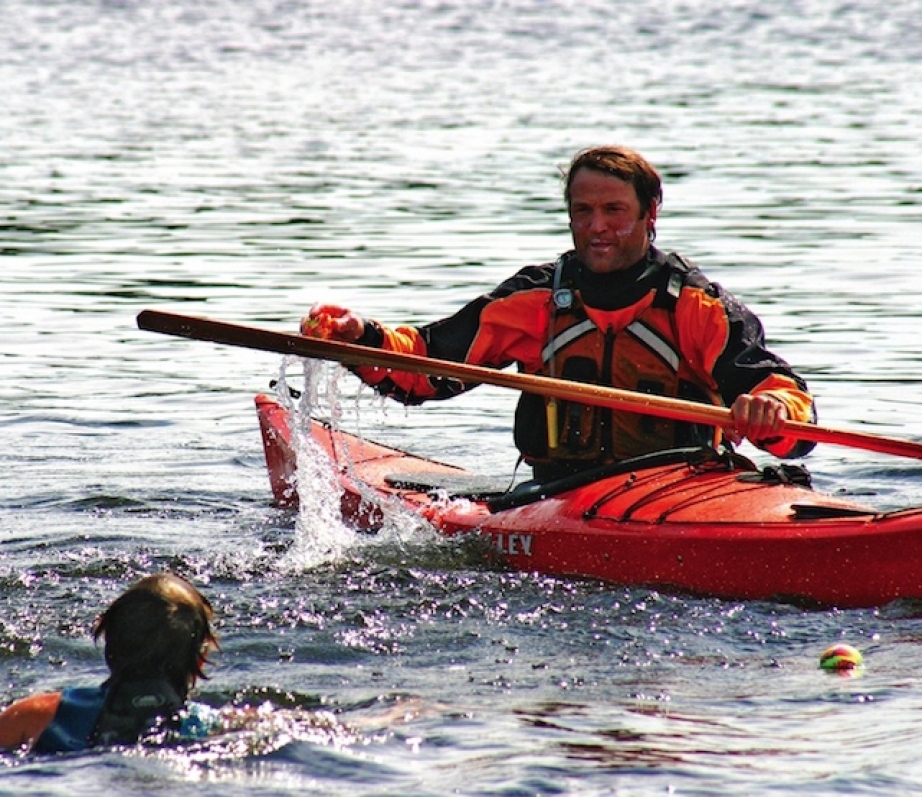“It’s a seal! Kill it!”
The projectiles whipped past my head in quick succession—neon Nerf missiles intent on annihilation. In desperation I dove under the dark water, resurfacing for air several yards beyond the bombardment. Thwak-splash! The hunters were still after me.
Who knew a posse of civil servants, schoolteachers, nurses and kayak instructors possessed such blood lust?
Okay, granted, my first introduction to Greenland-style kayaking found me in the water, not in a kayak. But as a wily member of a pod of neoprene-blubber, pinniped protagonists in a Greenland Games mock seal hunt, I at least had an up-close perspective on paddling stick.
Numerous years and Greenland-style gatherings later, my perspective has expanded to include an appreciation of the fascinating history, traditional skills, remarkable personalities and beautiful handcrafted equipment that are shaping this growing niche.
Following the opening of the Greenland Kayaking Championships to foreign competitors in 2000 (turn to “Full Immersion” on page 39 for a history of the competition here), traditional skills and equipment began to creep into the North American paddling scene.
Where a decade ago only a couple of pioneering organizers united stickheads, there is now a slew of trad symposia, workshops and trips from coast to coast.
Kayakers with a wide range of backgrounds and interests populate today’s Greenland-style tribe. Some are curious Euro-bladers lured by the hand-carved wooden beauty and affordable price tag of a skinny stick. Others are new to the sport and have heard that the low volume boats and buoyant blades make learning to roll a cinch. Then there are the dedicated pool jockeys who spend the frosty winter months building their repertoire of Greenland rolls, of which there are 30-odd variations with improbable-sounding names and challenging biomechanics to match (Our favorite? The walrus pull).
The ultimate accomplishment in Greenland rolling—the straightjacket roll—requires such flexibility, poise and precise technique that only the very best traditional aficionados can pull it off. These folks are passionate, frequently eccentric and wildly enthusiastic about bringing Greenland-style to the kayaking masses.
Two such leaders are Turner Wilson and Cheri Perry, the globetrotting gurus behind Kayak Ways, a Maine-based traditional skills and boat building school. Wilson calls his kayaking evangelism, “spreading the Green virus.”
It is an apt metaphor, for those who catch it are infected by a single-minded focus. I once spent an entire summer touring with my stick, logging 800 kilometers on a paddle I shaped with my own hands. My friend, Tammy, a 60-something retiree, has mastered nearly a dozen different rolls in just a few winters of weekly pool time and says it’s boosted her confidence immensely on open-water tours.
Which brings me back to the “seal” hunters, whose madness could only be the symptom of an increasingly common affliction: the Green virus.
This article originally appeared in Adventure Kayak, Early Summer 2012. Download our free iPad/iPhone/iPod Touch App or Android App or read it here.




